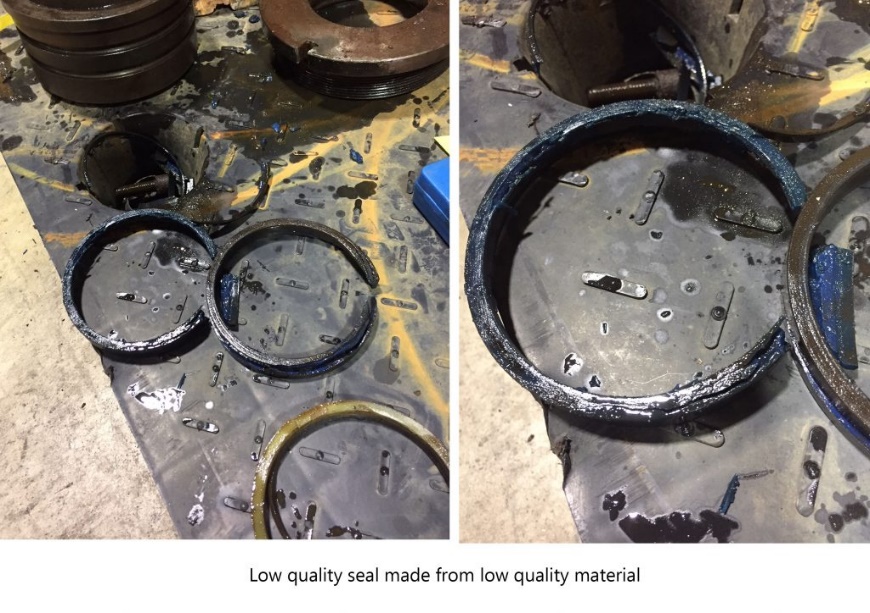I am currently working as a Postgraduate Researcher at the University of Leeds, where I am actively involved in research activities. Prior to this, I successfully completed my master's degree through the renowned Erasmus Mundus joint program, specializing in Tribology and Bachelor's degree in Mechanical Engineering from VTU in Belgaum, India. Further I handle the social media pages for Tribonet and I have my youtube channel Tribo Geek.
Wear of materials
Table of Contents
Introduction
The materials undergo wear due to various reasons, the mechanical action exerted on its surface, the environmental factors, the physical and chemical nature, due to the process like fatigue and creep, etc. It is important to understand the behavior of the different materials with respect to wear and it is mostly done by knowing their wear rate. Wear rate is defined as the amount of material removed per unit of time. This factor is one of the essential properties of the material in understanding its role and life in any mechanical components.

Fig – 1 Corrosive wear on iron tube [1]
Wear in metals and alloys
The clean metallic surface is very much prone to friction and wear, the wear rate on these surfaces is very high. The wear rate of the materials also depends on the properties or the type of mating material. The contamination on the material surfaces forms chemical films which reduce adhesion thereby reducing the wear rate. Due to the high contact area in soft metals like Pb and Sn, the wear rate is high even in low-loading conditions. However in the hexagonal metals such as Co and Mg along with the non-hexagonal metals such as Mo and Cr the wear rates are lower hence they are used as an alloying metal for steels. There are various factors other than their physical and chemical properties which vary the wear rate in case of the metallic materials [2].
The operating conditions such as sliding velocity, applied load and environment have a significant effect on the wear rates of the metals.
- Effect of temperature: At the interface of the metallic pairs the asperity-to-asperity contact occurs and the temperature is developed which results in the formation of oxide films. This oxide film acts like a protective layer decreasing the wear rate. At ambient temperature, the oxidation causes the formation of the protective oxide layer whereas at high temperature this oxide layer disintegrates causing a larger wear rate at the surface interface.
- Effect of applied load and sliding velocity: Increase in the loads causes mechanical damage at the interface leading to wear, whereas if the loads and the velocity are increased this creates a change in interface temperature leading to the formation oxide layer. This oxide layer decreases the wear rate at the interface. If this interface temperature is increased further then it causes severe mechanical damage.

Fig – 2 Adhesive wear on the metallic surface [3]
Wear in ceramics
Ceramics materials have high mechanical strength, are resistant to corrosion, and readily oxidize at elevated temperatures. These properties of ceramics cause low area contacts which help in reducing the friction and wear at the surface interface. However, fracture toughness is one of the important parameters in ceramics that affects the wear rate. The change in the mechanical deformation increases the fracture toughness at the interface leading to increase in the wear rate at the interface. There are operating conditions such as applied load, sliding velocity, and environment which affect the wear rate of the ceramics [2].
- Effect of chemical environments: The various interactions of the ceramics with the atmospheric liquid or gases causes the change in the chemistry at the interface. This change in chemistry at the interface causes surface modification leading to chemical fracture which induces the wear rate of the material.
- Effect of sliding velocity, and contact pressure: The change in the operating conditions such as the sliding velocity and contact pressure causes mild wear at the interface. The wear debris formed is very fine and is chemically different from the parent material. Whereas the wear mechanisms caused due to the brittle fracture lead to high wear rates and rough surfaces. Also, the is low wear at low pressure and low velocity whereas severe wear is at high pressure and high velocity.

Fig – 3 wear on the ceramics [4]
Wear in polymers
The polymers have lower friction coefficients and moderate wear rates in comparison to metals and ceramics. The polymers fall under the family of self-lubricating solids. The main wear mechanisms that occur in the polymers are adhesion, abrasion, and fatigue. These mechanisms are caused when the polymers slide with the harder material surface. During the run-in period, the wear rate is stable and after a duration of time, the wear rate will increase with the increase in sliding speed and other operating conditions. The interface temperature of the polymers and other solid lubricants is characterized as the function of normal pressure–sliding velocity (PV). The polymers when reached beyond the PV limit melt even at the ambient temperature. The two important polymers are plastics and elastomers [2].
- Plastics: Plastics have greater PV limits than elastomers and under lubricated conditions, these plastics have a greater PV limit. In case of the plastic composites, the orientation of the fibers plays an important role in affecting the wear rates. If the sliding is against the orientation this tends to increase the wear rates and vice-versa.
- Elastomers: The PV limit of the elastomers is comparatively lowered than that of plastics. The elastomer composites have comparable wear rates to plastic composites. The wear and frictional properties of elastomers can be varied by adding the additives such as silica, graphite, etc. which improves their wear properties.

Fig – 4 wear on the polymers [5]
Reference
[1] https://www.tribonet.org/wiki/corrosive-wear/
[2] Bhushan, B., 2013. Introduction to tribology. John Wiley & Sons.
[3] https://www.intechopen.com/chapters/73685
[4] https://sladersyard.wordpress.com/paul-wearing-ceramics/
[5] https://prinzpolymers.com/

Be the first to comment